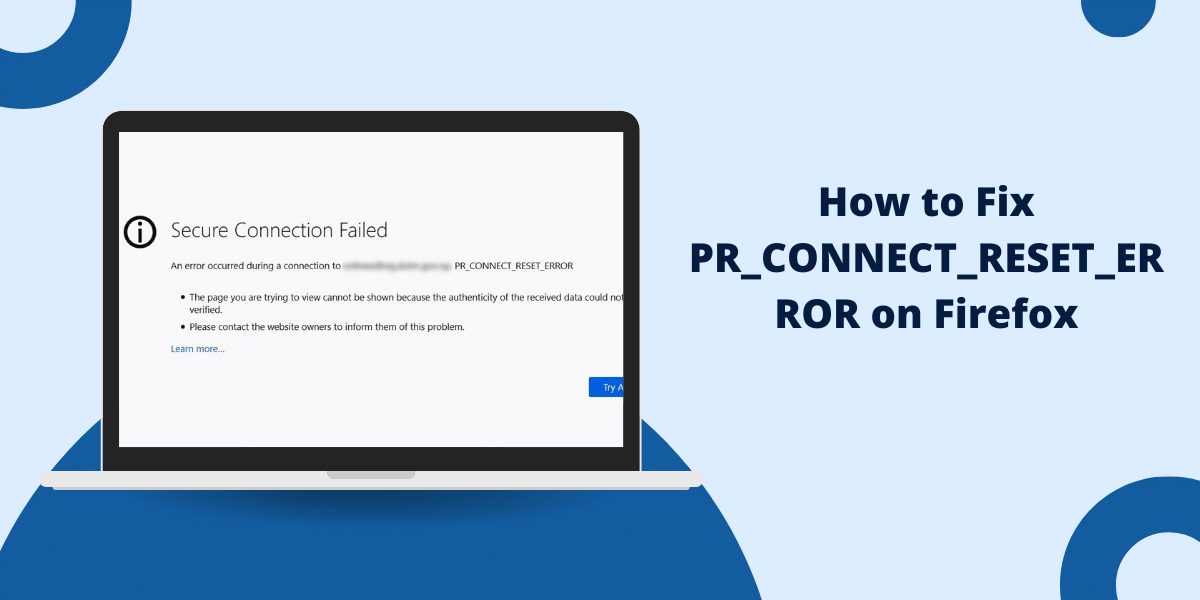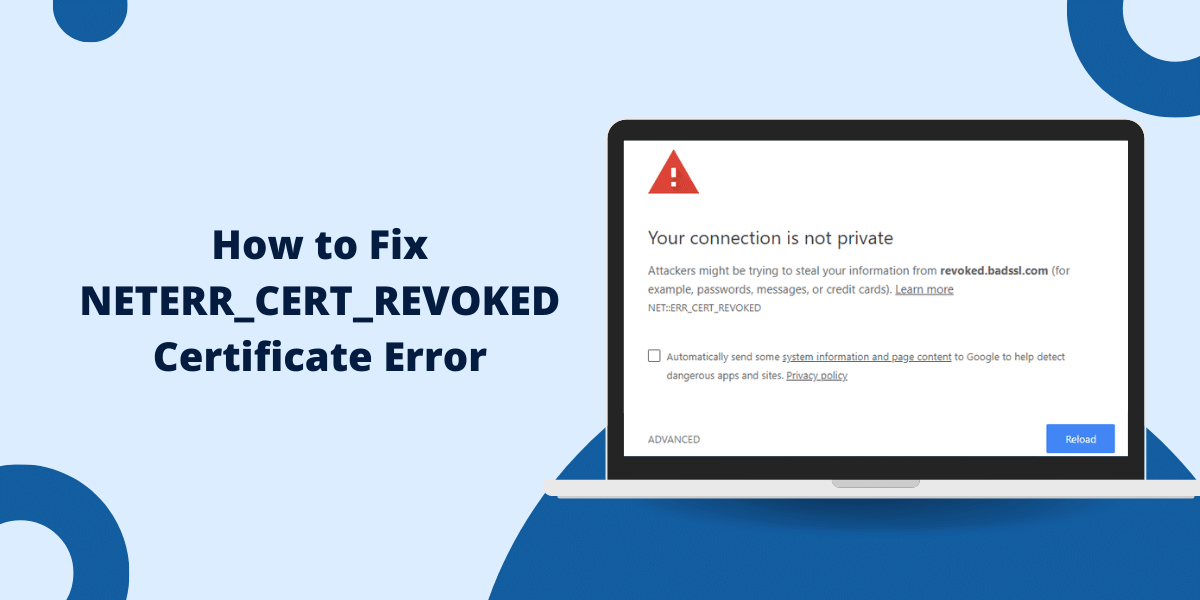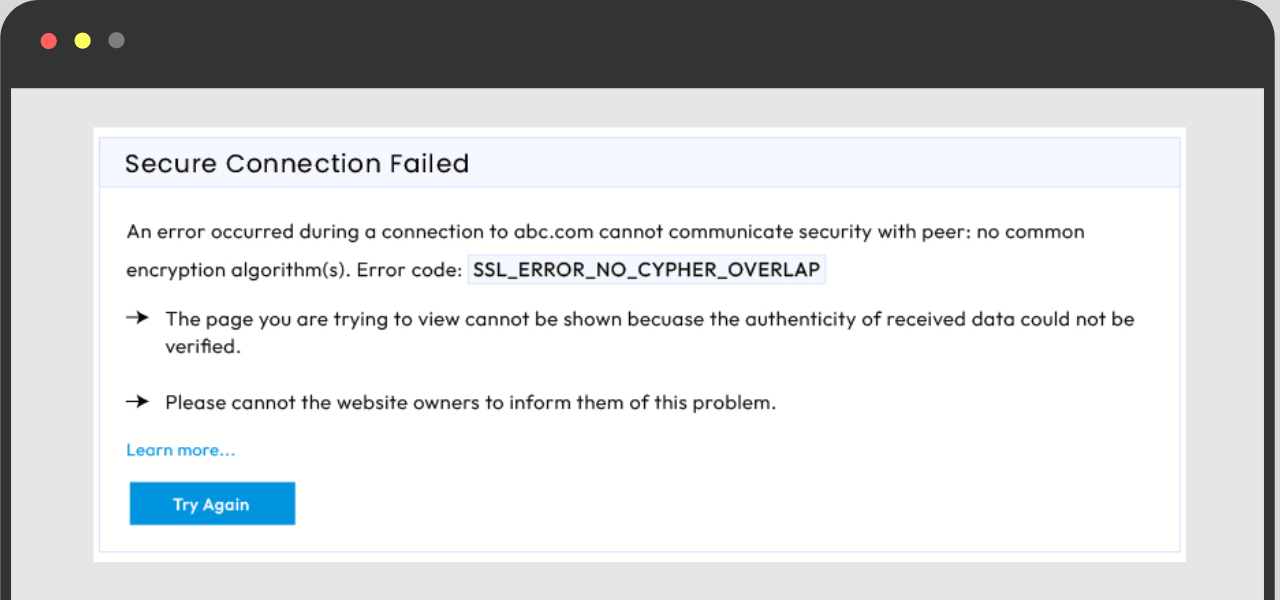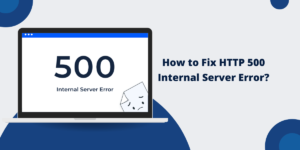If you’ve ever encountered the PR_CONNECT_RESET_ERROR on Firefox, you know how frustrating it can be. This error typically occurs when Firefox is unable to establish a secure connection to a website. It’s a common issue that can stem from various causes, including network problems, browser settings, or even server-side issues.
In this guide, we’ll walk you through the step-by-step process to fix the pr_connect_reset_error firefox.
What is PR_CONNECT_RESET_ERROR?
The PR_CONNECT_RESET_ERROR is a connection error that occurs in Mozilla Firefox when the browser fails to establish a secure connection to a website. This error is often related to SSL/TLS handshake failures, network interruptions, or misconfigured browser settings.
When this error appears, you’ll typically see a message like:
An error occurred during a connection to yoursite.com. PR_CONNECT_RESET_ERROR.
What are the Common Causes the PR_CONNECT_RESET_ERROR in Firefox?
1. Network Issues
Problems with your internet connection, router, modem, or network hardware can disrupt the connection between your browser and the website’s server.
2. Browser Settings
Incorrect settings or extensions in Firefox can interfere with secure connections, leading to the firefox pr_connect_reset_error.
3. Server Problems
Server configuration issues or server-side problems can prevent Firefox from establishing a secure connection.
4. VPN Issues
If you’re using a Virtual Private Network (VPN), misconfigured VPN settings can cause connection resets.
5. Firewall or Antivirus Software
Your firewall or antivirus software might block the connection to the remote server, triggering the error code: pr_connect_reset_error.
6. Proxy Settings
Issues with your proxy settings can prevent Firefox from connecting to websites securely.
7. Browser Cache
A corrupted or outdated browser cache can also lead to connection errors like the pr connect reset error firefox.
Step-by-Step Guide to Fix PR_CONNECT_RESET_ERROR
Fixing the PR_CONNECT_RESET_ERROR takes some troubleshooting to identify the specific cause. Here are systematic steps to resolve it:
- Check Your Internet Connection, Router, Modem, or Network Hardware
- Check Your Browser Settings
- Reset Your SSL Cache
- Clear Your Browsing History
- Check Your System Date and Time
- Deactivate HTTPS Scanning
- Disable Add-ons for Your Browser
- Check Your VPN Settings
- Check Your Proxy Settings
- Reset Your Browser’s SSL Settings
Step 1: Check Your Internet Connection, Router, Modem, or Network Hardware
- Ensure your internet connection is stable.
- Restart your router or modem to resolve any temporary network issues.
- Check for hardware malfunctions or loose cables.
Step 2: Check Your Browser Settings
- Open Firefox and click on Settings option.

- Go to General > Network Settings.

- Ensure that Firefox is configured to use the correct network settings.
Step 3: Reset Your SSL Cache
- Type about:config in the Firefox address bar and press Enter.
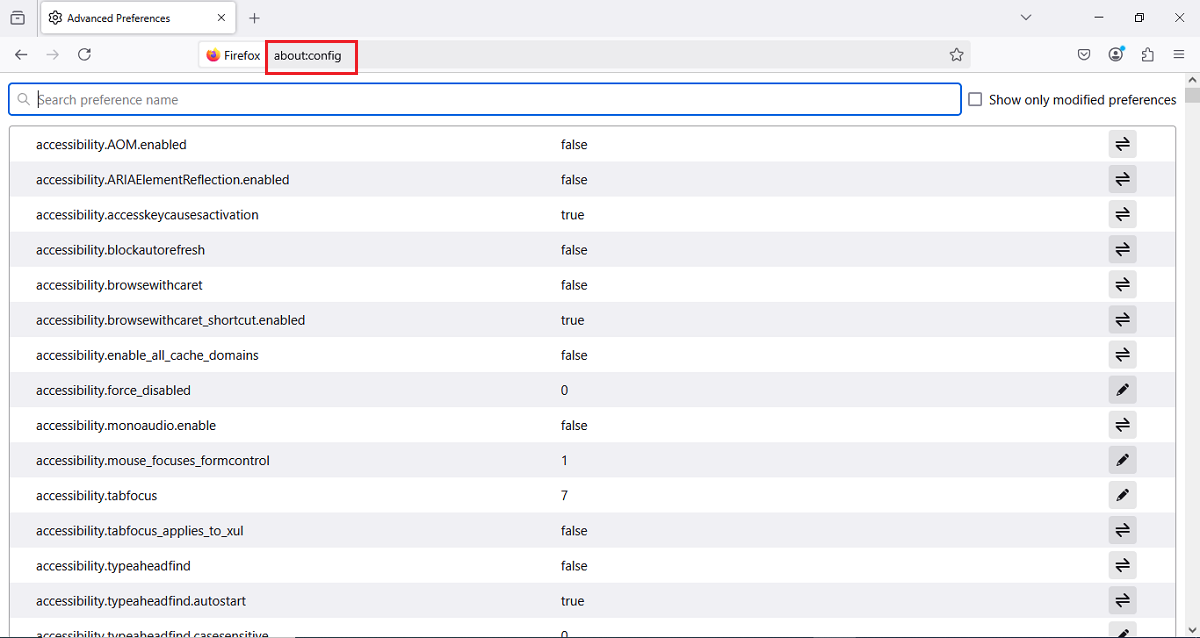
- Search for ssl and reset any modified SSL settings to their default values.
Step 4: Clear Your Browsing History
- Go to Settings > Privacy & Security > Clear Data.
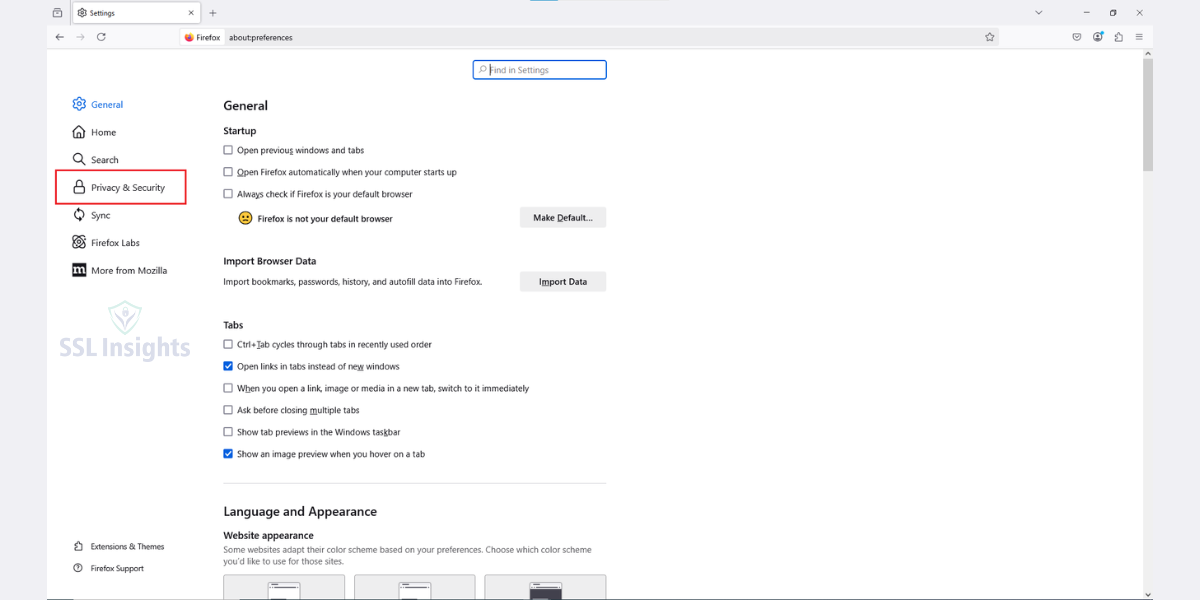
- Select Cookies and Site Data and Cached Web Content, then click Clear.
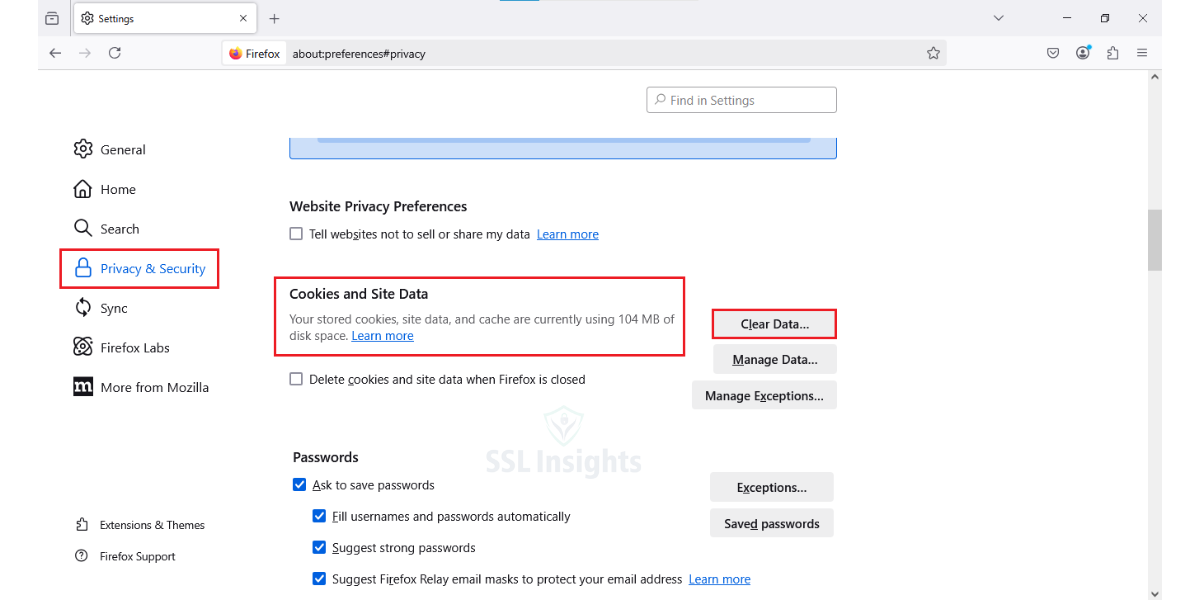
Step 5: Check Your System Date and Time
- Incorrect system date and time can cause SSL certificate errors.
- Ensure your system’s date and time are set correctly.
Step 6: Deactivate HTTPS Scanning
- Some antivirus programs perform HTTPS scanning, which can interfere with secure connections.
- Disable HTTPS scanning in your antivirus settings.
Step 7: Disable Add-ons for Your Browser
- Go to Settings > Extensions & Themes.
- Disable all extensions and re-enable them one by one to identify the problematic add-on.
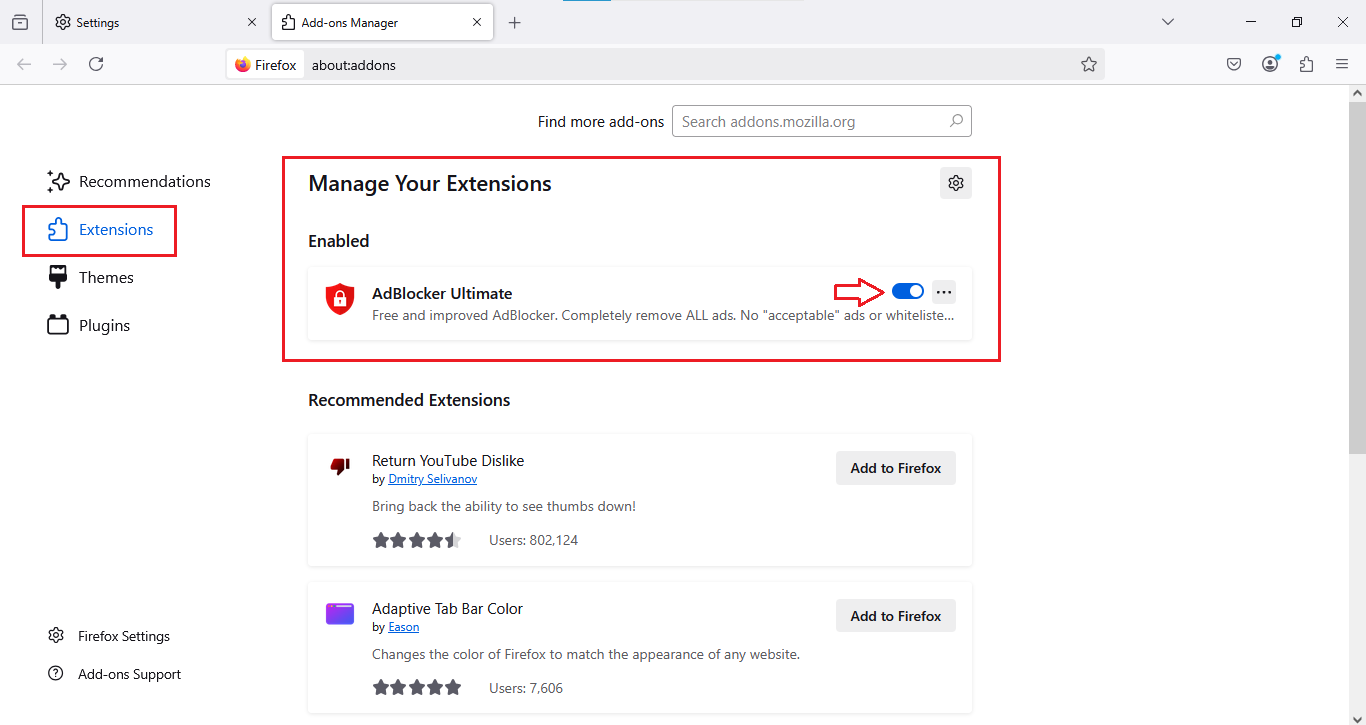
Step 8: Check Your VPN Settings
- If you’re using a VPN, disconnect it temporarily to see if the firefox error code: pr_connect_reset_error persists.
- Reconfigure your VPN settings or switch to a different server.
Step 9: Check Your Proxy Settings
- Go to Settings > General > Network Settings > Settings.
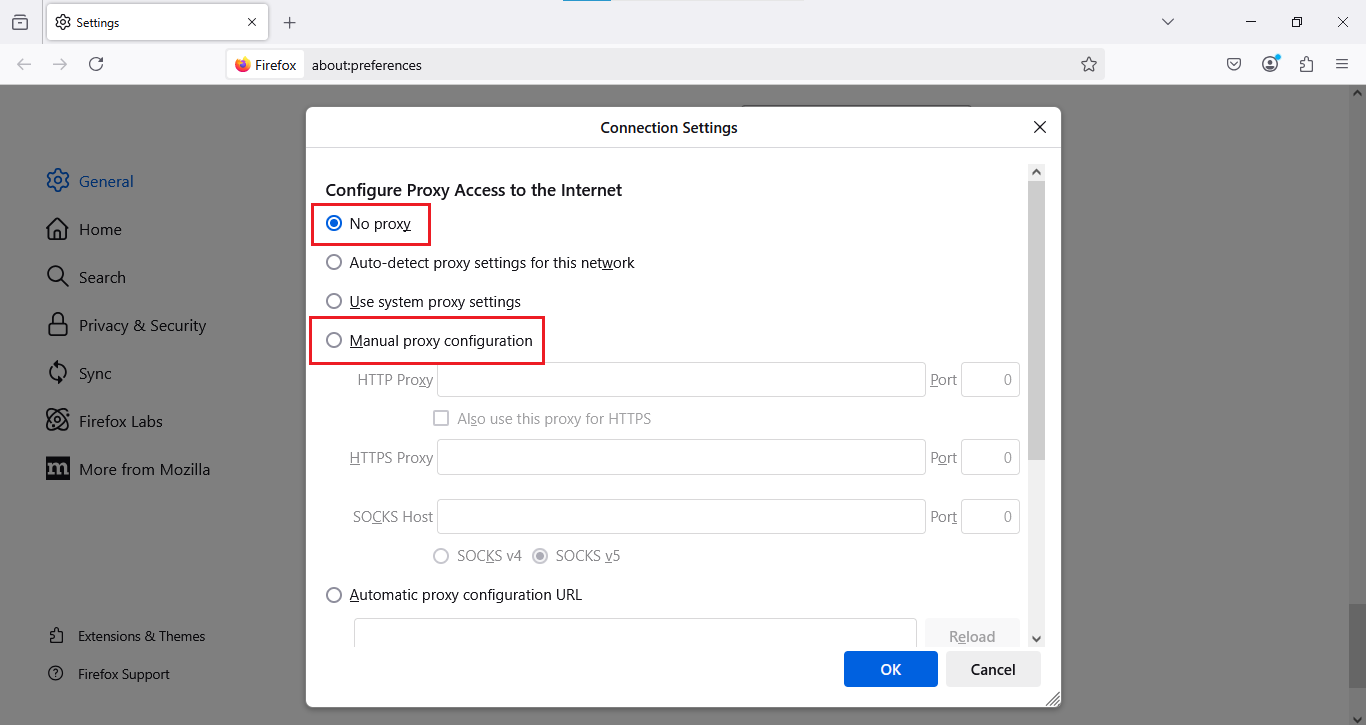
- Ensure that the proxy settings are configured correctly or set to “No Proxy.“
Step 10: Reset Your Browser’s SSL Settings
- Type about:config in the Firefox address bar and press Enter.

- Search for security.tls.version.min and set its value to 1.
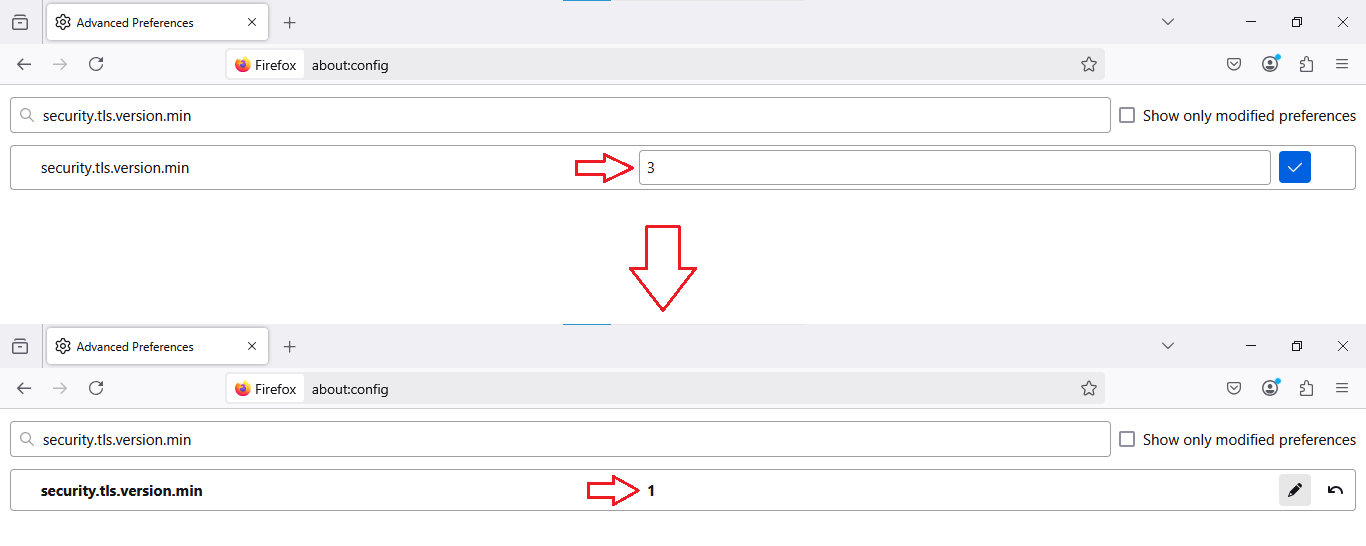
How to Avoid the PR_CONNECT_RESET_ERROR
Preventing the PR_CONNECT_RESET_ERROR from occurring in the first place can save you time and frustration. Here are some proactive steps to avoid this error:
1. Maintain a Stable Internet Connection
- Ensure your internet connection is reliable and stable.
- Regularly restart your router or modem to prevent network glitches.
2. Keep Firefox Updated
- Always use the latest version of Firefox to benefit from bug fixes and security updates.
- Enable automatic updates in Firefox by going to Settings > General > Firefox Updates.
3. Configure VPN and Proxy Settings Properly
- If you use a VPN or proxy, ensure the settings are correctly configured.
- Avoid using unreliable VPN servers or proxies.
4. Regularly Clear Browser Cache
- Clear your browser cache periodically to prevent corrupted data from causing errors.
- Use the Clear Data option under Settings > Privacy & Security.
5. Disable Unnecessary Browser Extensions
- Only install trusted extensions and disable those you don’t use.
- Faulty extensions can interfere with secure connections.
6. Monitor Firewall and Antivirus Settings
- Ensure your firewall or antivirus software isn’t blocking legitimate connections.
- Add Firefox to the list of trusted applications in your security software.
7. Verify SSL/TLS Settings
- Ensure Firefox is configured to use the latest SSL/TLS protocols.
- Avoid modifying advanced settings unless necessary.
Final Thoughts
The PR_CONNECT_RESET_ERROR on Firefox can be a hassle, but it’s usually fixable with the right steps. By following this guide, you can identify the root cause and apply the appropriate solution. Whether it’s a network issue, browser setting, or VPN problem, this step-by-step approach ensures you’re back to browsing securely in no time.
If the issue persists, consider reaching out to your internet service provider or the website’s support team for further assistance. For more details on pr_connect_reset_error firefox fix, refer to the steps above.
Frequently Asked Questions
What is the PR connect server error?
The PR connect server error is a generic term for connection issues between a client (like Firefox) and a server, often caused by network or server-side problems.
How to fix the pr_connect_reset_error?
Follow the steps outlined in this guide, such as checking your internet connection, resetting SSL settings, and clearing your browser cache.
What is the Pr_connect_reset_error server side?
The Pr_connect_reset_error server side refers to issues on the website’s server, such as misconfigured SSL certificates or server overload, which can cause errors.
Can a VPN cause PR_CONNECT_RESET_ERROR?
Yes, misconfigured VPN settings or server issues can trigger this error.
Can browser extensions cause PR_CONNECT_RESET_ERROR?
Yes, faulty or incompatible extensions can interfere with secure connections. Disable them to identify the issue.
What is the Pr_connect_reset_error in Splunk?
In Splunk, Pr_connect_reset_error may appear in logs when there’s a connection issue between the Splunk server and a remote data source.
How to resolve error code pr_connect_reset_error?
To resolve the error code pr_connect_reset_error, check your network, browser settings, VPN, and SSL configurations as detailed in this guide.
How to avoid pr_connect_reset_error?
To avoid the error, maintain a stable internet connection, keep Firefox updated, configure VPN/proxy settings properly, and regularly clear your browser cache.
